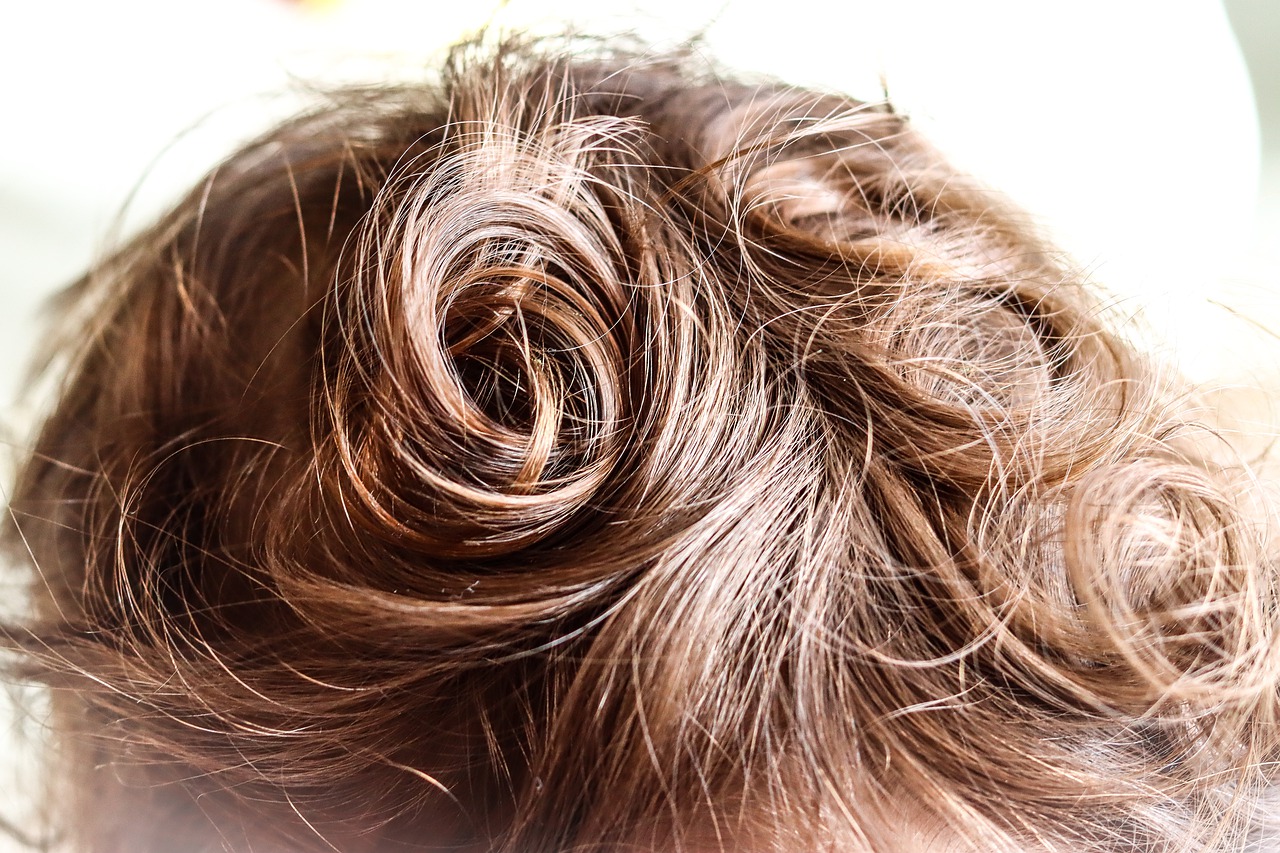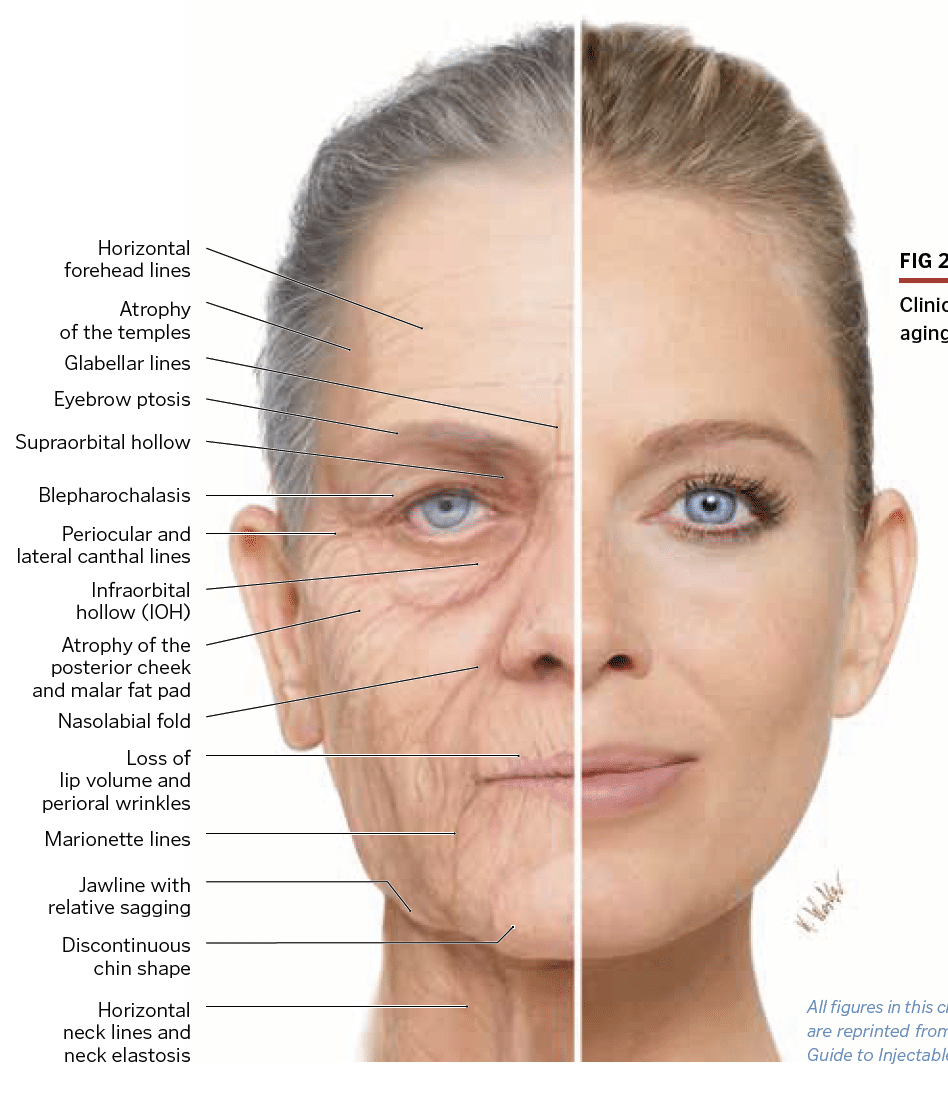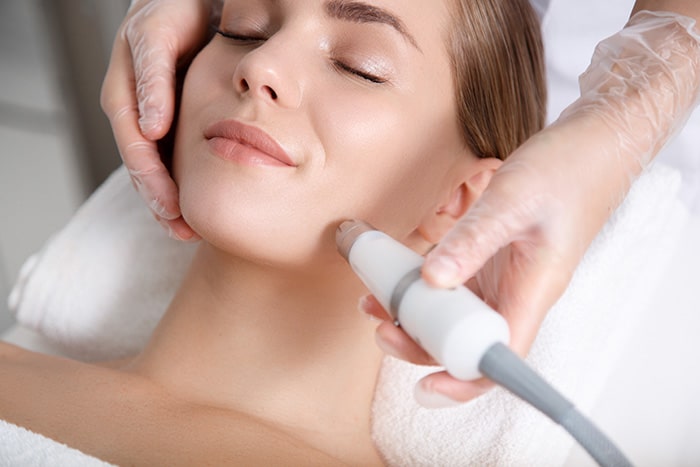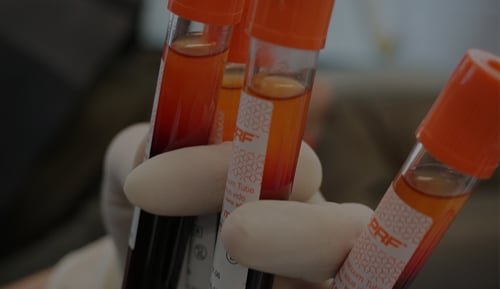
The average normal human scalp contains between 90 000 to 140 000 terminal hairs. These hairs can grow approximately 1 cm per month. Meanwhile, hair loss is continuous, with people losing about 100 hairs per day on average.
The pilosebaceous or hair follicle unit is made of the hair follicle along with an attached sebaceous gland and arrector pili muscle.
Hair follicles vary considerably in size and shape, depending on their location, but they all have the same basic structure. The number and distribution of hair follicles over the body and the future phenotype of each hair is established during fetal development; no extra follicles are added after birth
The hair follicle begins at the surface of the epidermis and extends into the dermis. Vellus hairs may extend only into the reticular dermis whereas terminal hairs extend into the deep dermis, and sometimes even subcutis.
Hair Layers
The hair shaft consists of an inner core known as the medulla. This is surrounded by the cortex, which makes up the bulk of the hair. Moving outwards, there is a single layer of cells making up the shaft cuticle. The shaft cuticle is then encased in three layers that form the inner (internal) root sheath. The inner sheath is important in shaping the hair shaft as it grows upwards from the matrix. The inner sheath keratinizes from the outside-in, and will eventually disintegrate mid-follicle, around the level of the isthmus. Finally, the outer (external) root sheath encases the entirety of the hair shaft. This layer undergoes trichilemmal keratinization around the level of the isthmus.
Sebaceous glands are acinar holocrine-secreting appendages of the epidermis and are a crucial component of the pilosebaceous unit.
They are found all over the body especially in certain areas of the skin such as the face. These glands open onto the hair follicles, except in areas such as the lips, where they empty directly onto the mucosa surface because lips do not contain hair follicles. When stimulated by hormones such as androgens, sebaceous glands SGs produce and release sebum, an oily and waxy material. That contributes to the hydrophobic barrier of the skin.
The arrector pili muscle is a small band of smooth muscle bundle that attaches to the external root sheath of bulge region of the follicle and extends to its superior attachment in the upper dermis. and is innervated by the sympathetic branch of the autonomic nervous system
In cold climates, sympathetic stimulation causes these muscles to contract. This raises the level of the skin slightly and causes the hair to stand erect, which is commonly referred to as “goose-bumps.”
The Hair Growth Cycle
Hair growth occurs in a cyclical manner, but each follicle follows its own hair cycling schedule, completely independent of other hairs on the scalp
A normal hair growth cycle has three phases ; anagen, catagen and telogen.
The Anagen Phase is the active growth stage, typically lasts approximately two to seven years on the scalp. Approximately 85 to 90% of hair is in the anagen phase in any one time.
The Catagen Phase ,also known as the transition phase, lasts about two weeks and is a period of involution resulting in club hair formation after many cells in the outer root sheath undergo apoptosis. The club hair has a white, hard node on the end.
The Telogen Phase, also known as the resting phase. Club hairs, which are essentially dead are held on the scalp. They are typically held for about 100 days and then released and shed so that the anagen phase can begin again with a new hair.
Hair Loss and the Growth Cycle
When hair loss occurs , regardless of the cause the Hair Growth Cycle is almost always affected
An abnormal or disrupted hair growth cycle can occur at any phase;
Shortened Anagen Phase: The duration of the growth phase is shortened and the entire Hair Growth Cycle becomes affected.
Early Catagen Phase: When the growth phase is shortened, the hair follicle enters the transition phase earlier than normal.
Prolonged Telogen : As more hairs enter the resting phase prematurely, the normal resting phase becomes prolonged, causing increased shedding. A prolonged resting phase means that fewer hair follicles re-enter the growth phase, which results in weaker or no regrowth
Factors affecting growth cycle:
Factors controlling hair growth include
- genetics
- androgens (testosterone and its active metabolite, dihydrotestosterone (DHT))
- estrogens,
- thyroid hormones,
- glucocorticoids,
- retinoids,
- prolactin, and
- growth hormone
- drugs
- nutritional status
- stress
The androgens are the hormones with the greatest impact on the hair follicle: testosterone and DHT act through androgen receptors in the dermal papilla. These hormones are responsible for androgenic alopecia, later in life, for genetically susceptible individuals as they cause miniaturization of follicles in the scalp. In adolescence however, they increase the size of hair follicles in androgen-dependent areas such as the beard area .
The goal of any treatment approach, no matter the cause, type or hair growth issue, is to normalise and restore the Hair Growth Cycle.



